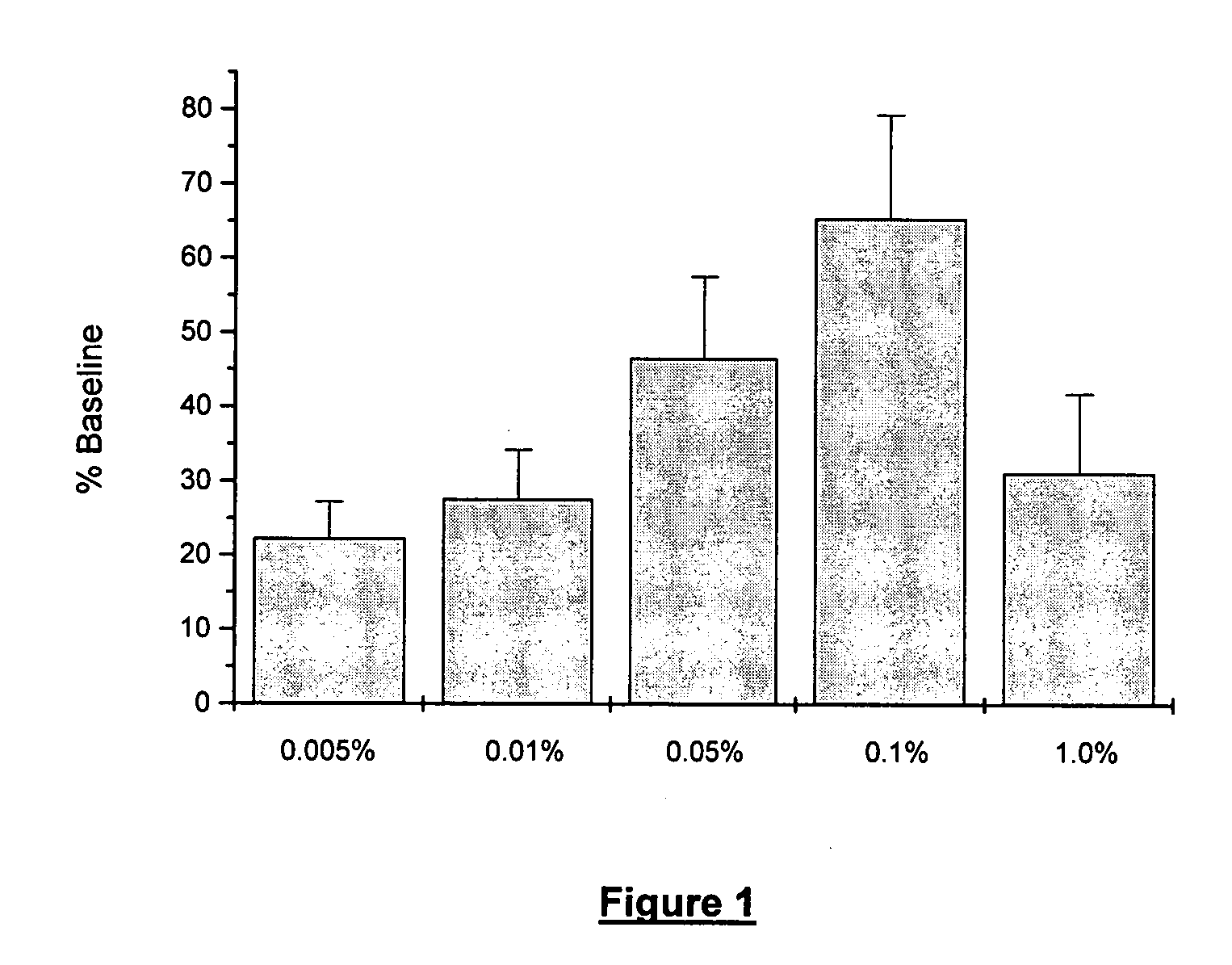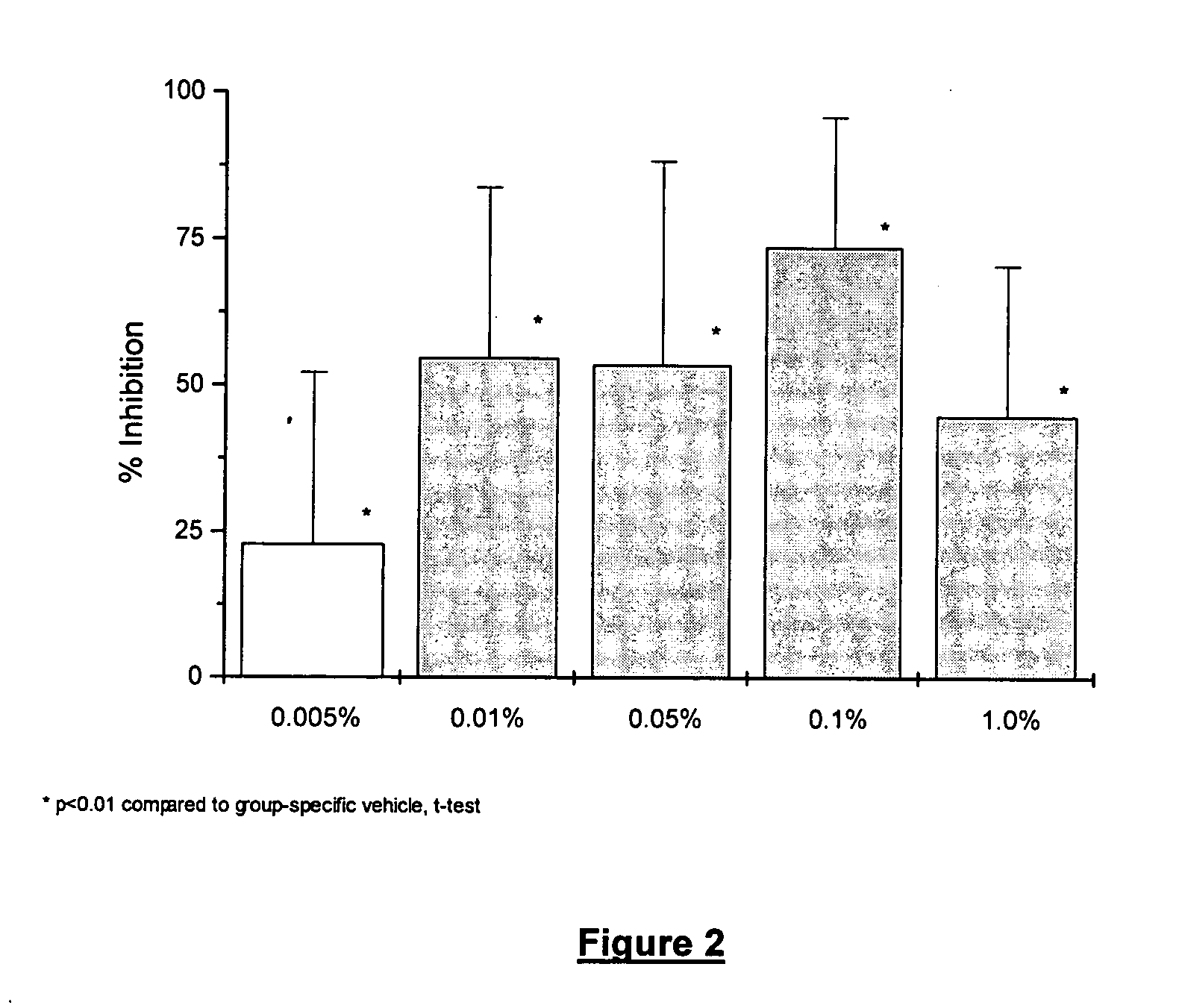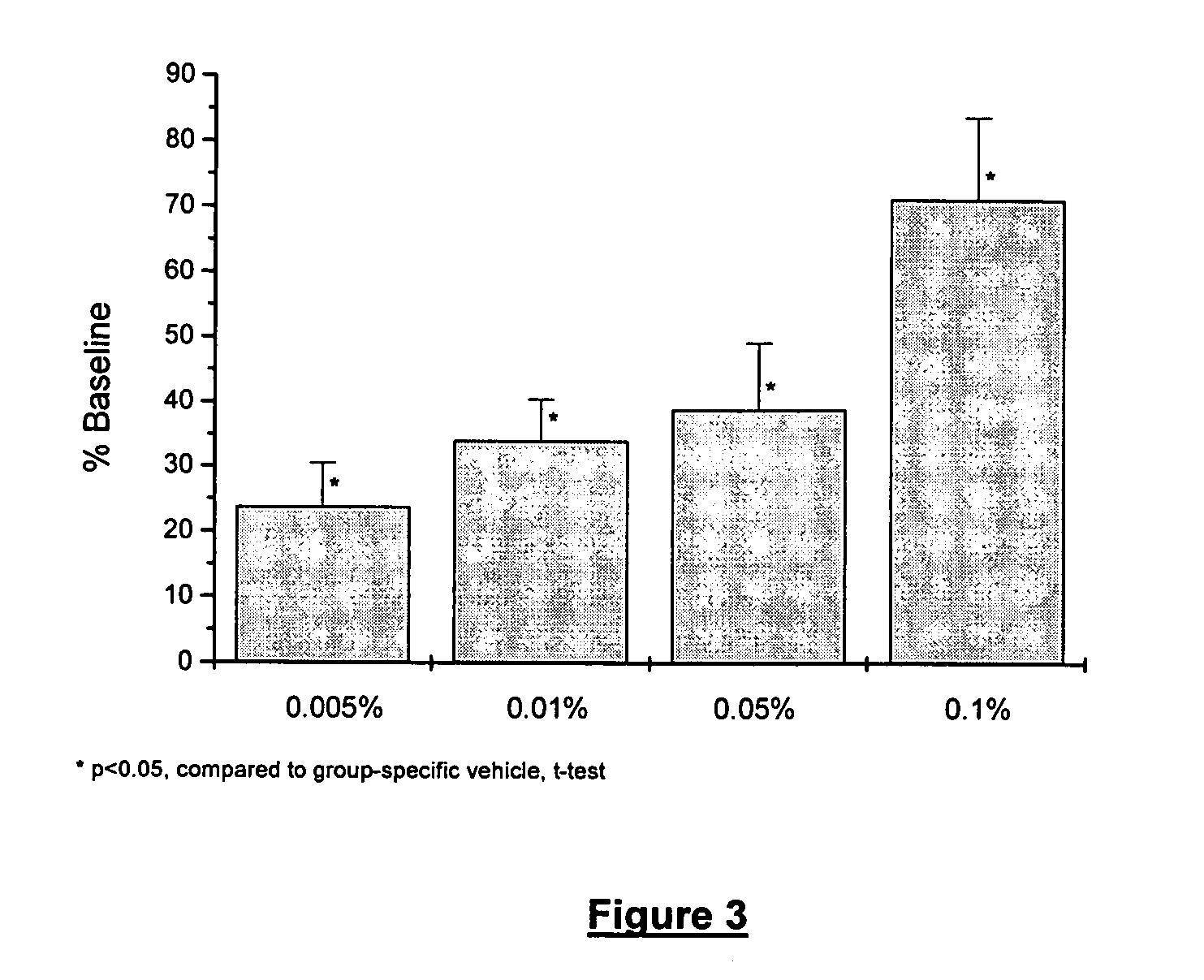Use of oculosurface selective glucocorticoid in the treatment of dry eye
- Summary
- Abstract
- Description
- Claims
- Application Information
AI Technical Summary
Benefits of technology
Problems solved by technology
Method used
Image
Examples
example 1
[0046] The following formulation is representative of the preferred topical ophthalmic compositions of the present invention:
COMPENDIALCONCENTRATIONCOMPONENTDESIGNATION(w / v %)RimexoloneNon-Compendial0.005-0.1Polyquaternium-1Non-Compendial0.0005Boric AcidNF0.6Povidone K90USP1.5TyloxapolUSP0.008Sodium ChlorideUSP0.5MannitolUSP0.2TromethamineUSP0.25Sodium HydroxideNFAdjust pH to 7.4 ± 0.2And / orHydrochloric AcidNFPurified WaterUSPQ.S. 100
[0047] The above-described formulations may be prepared as described below:
[0048] A measured amount of rimexolone is micronized using a portion of the specified amount of tyloxapol as a wetting agent and purified water as vehicle in appropriate ball milling or micronization equipment.
[0049] In a separate vessel containing purified water (60 to 80° C.), the polyvinyl pyrrolidone is added and dissolved. Boric acid, mannitol, sodium chloride, tromethamine and the remainder of the tyloxapol solution are added and dissolved into this solution. The result...
example 2
[0051] The ability of low doses of rimexolone to alleviate dry eye conditions was evaluated. The compositions tested were the same as the formulation described in Example 1 above, with rimexolone concentrations of 0.005%, 0.01%, 0.05 and 0.1%, respectively. The experimental procedures are described below.
[0052] Dry eye was induced in New Zealand white rabbits (approximately 2 kg) by eliciting bilateral inflammation of the lacrimal glands. Tear function was assessed by measuring tear breakup time (“TBUT”) daily for three days, following the induction of dry eye. TBUT was determined by instilling 5μl sodium fluorescein into the cul de sac and manually blinking the lids to distribute the fluorescein within the tear film. Under slit lamp observation, the eye was held open and the time to tear film breakup recorded. Efficacy was determined by comparing TBUT relative to pre-inflammation baseline values in drug and vehicle treated animals.
[0053] In a separate group of animals, susceptibi...
example 3
[0055] A second dose-response study was conducted using the procedures described in Example 2 above. The results of the study are summarized in FIGS. 3 and 4.
[0056] The rimexolone compositions of Example 1 were significantly effective at each concentration tested. The maximally effective concentration for restoration of TBUT, as well as for prevention of desiccation-induced corneal staining, was 0.1%. At the 0.1% concentration, rimexolone inhibited corneal staining by 77% (FIG. 4) and restored TBUT to 71% of baseline on day three (FIG. 3).
PUM
| Property | Measurement | Unit |
|---|---|---|
| Fraction | aaaaa | aaaaa |
| Fraction | aaaaa | aaaaa |
| Fraction | aaaaa | aaaaa |
Abstract
Description
Claims
Application Information
 Login to View More
Login to View More - R&D
- Intellectual Property
- Life Sciences
- Materials
- Tech Scout
- Unparalleled Data Quality
- Higher Quality Content
- 60% Fewer Hallucinations
Browse by: Latest US Patents, China's latest patents, Technical Efficacy Thesaurus, Application Domain, Technology Topic, Popular Technical Reports.
© 2025 PatSnap. All rights reserved.Legal|Privacy policy|Modern Slavery Act Transparency Statement|Sitemap|About US| Contact US: help@patsnap.com



